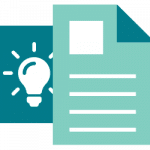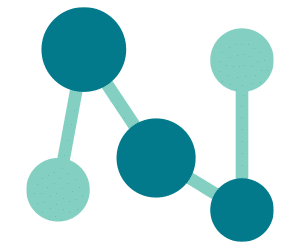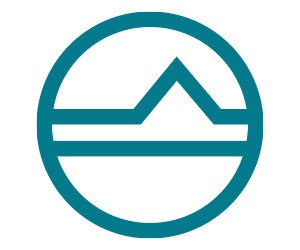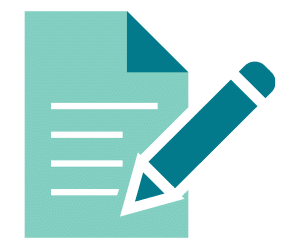Managing ISO 17491 Compliance within Azure DevOps using Modern Requirements

What is ISO:
ISO (the International Organization for Standardization) is a worldwide federation of national standards bodies (ISO member bodies). The work of preparing International Standards is normally carried out through ISO technical committees. Each member body interested in a subject for which a technical committee has been established has the right to be represented on that committee.
ISO 17491: This ISO was prepared by Technical Committee ISO/TC 94, Personal safety — Protective clothing and equipment, Subcommittee SC 13, Protective clothing. ISO 17491 specifies a test method for determining the resistance of protective clothing against penetration by chemicals. There are 5 parts to this ISO that address the chemical permeation resistance of the clothing materials
ISO 17491 consists of the following parts, under the general title Protective clothing — Test methods for clothing providing protection against chemicals:
- — Part 1: Determination of resistance to outward leakage of gases (internal pressure test)
- — Part 2: Determination of resistance to inward leakage of aerosols and gases (inward leakage test)
- — Part 3: Determination of resistance to penetration by a jet of liquid (jet test)
- — Part 4: Determination of resistance to penetration by a spray of liquid (spray test)
- — Part 5: Determination of resistance to penetration by a spray of liquid (manikin spray test)
Evaluations of the chemical resistance of protective clothing material should be carried out using the appropriate test.
The integrity test methods specified by this International Standard are as follows:
ISO 17491-1 specifies a method to be performed either at minimum test settings (Method 1) or at more rigorous test settings (Method 2), for assessing the resistance of a gas-tight suit to outward leakage of air through, for example, essential openings, fastenings, seams, interface areas between items, pores and any imperfections in the construction materials.
ISO 17491-2 specifies two different methods for determining the inward leakage of chemical protective suits in an aerosol environment (Method 1) or a gaseous environment (Method 2). The procedure is applicable to gas-tight suits and non-gas-tight suits and provides an evaluation of chemical protective suit integrity, particularly with regard to leakage in the breathing zone, under dynamic conditions through the use of human subjects.
ISO 17491-3 specifies a method for determining the resistance of chemical protective clothing to penetration by jets of liquid chemicals. This procedure is applicable to clothing worn in situations where there is a risk of exposure to a forceful projection of a liquid chemical and which is intended to be resistant to penetration under conditions that require total body surface cover (but not gas-tight clothing).
ISO 17491-4 specifies a method to be performed either at minimum test settings (Method A — low-level spray test) or at more rigorous test settings (Method B — high-level spray test) for determining the resistance of chemical protective clothing to penetration by sprays of liquid chemicals. This procedure applies to protective clothing which is intended to be worn when there is a risk of exposure to slight splashes of a liquid chemical or to spray particles that coalesce and run off the surface of the garment, and to clothing which is intended to be resistant to penetration under conditions that require total body surface cover (but not gas-tight clothing).
ISO 17491-5 specifies an alternative test method for determining the resistance to spray penetration. It uses a static manikin instead of a test subject; it also uses a different spray configuration and duration.
Compliance within Azure DevOps using Modern Requirements
Modern Requirements is a world-renowned requirements management tool built within Azure DevOps. Modern Requirements enables Azure DevOps users to comply with ISO 17491 in an automated and efficient manner, from requirement gathering challenges, to building documents, to testing and traceability through a project lifecycle. Call it a one stop shop.
The following list summarizes some of the key features of Modern Requirements that could be used to fill the gap of requirements management when working with ISO 17491 compliance process. These benefits are crucial in helping you ensure that all the regulatory requirements within your processes are met, resulting in quicker complete compliance, slashed product development cycle times and faster value delivery.

Smart Docs: Smart Docs is an authoring tool that is designed to bridge a gap between work items and documentation. It enables users with the ability to build documentation within Azure DevOps. Which means it will help ISO 17491 compliance to be efficient and less error prone.
- Users can write their requirements specific to any part of ISO 17491, starting from ISO 17491-1 to ISO 17491-5.
- Add detailed tables, leverage rich text, images, and diagrams. The beauty of this is that while working in Smart Docs, user will be simultaneously creating and updating work items in Azure DevOps as well.
- Users can create requirements and link test cases within the Smart Docs. Write your Business Requirements Document (BRD), System Requirements Specifications (SRS) or Product Requirements Document (PRD) etc. based on ISO 17491 compliance specific i.e., essential openings, fastenings, seams, interface areas between items, pores, and any imperfections in the construction materials etc.
- Users can also use the versioning option available in Smart Docs to view changes made to their work items such as Test Cases, Requirements etc.
Note: For Medical device industry using ISO 17491 compliance please refer to a blog specific to ‘Design Control‘

- Use this Modern Requirements tool to alleviate risk by running a trace between your FMEA Risk, Requirements or Test Cases.
- Use Traceability matrix to connect any work items such as functional safety requirements with product specifications, and track requirements against test cases (for V&V), bugs, risks, issues, and change.
- Use Traceability matrix to export test result reports. Please refer to blog ‘Export Test Results‘ for further details

- Baseline tool also allows users to reuse requirements across projects to avoid redundant work and save time. It is an efficient tool when comes to branching and merging.

- This feature lets you connect e-signatures which is CFR part 11 compliant. When nonconformities are identified, corrective tasks can be created directly that allows stakeholders to keep track of all requested changes.
- With one click of the mouse, users can generate an audit report to record every single review feedback of stakeholders.
- Users can send individual work items such as test cases, requirements etc pertaining to ISO 17941 compliance for sign off/ approval, to multiple users

- Users can build flowcharts/diagrams in your documents using Smart Docs.
- Based on the workflow input, the system could automatically generate user stories (requirements), use cases, and test cases to elicit requirements during the safety analysis process.

- You can run reports from modules such as Backlogs, Diagram, Smart Docs, Simulation and Use Cases, Trace Analysis, Baseline, and Review.
- This feature allows users to build their reports using default options provided by Modern Requirements or configure a report based on their needs i.e., work items hierarchy or desired structure. That’s not it, the report can be saved and shared as MS Word, PDF and or HTML format. It also allows you to upload your own template when saving.
- User can also utilize the reporting tool to generate test result reports form the Azure DevOps Test Hub. This will assist in providing reports pertaining to all or specific ISO 17491 Compliance tests. For further details on how to run reports from ADO Test Hub, please refer to ‘Test Hub Reporting and Trace Analysis‘.
Conclusion
Chemical protective clothing is worn in conjunction with appropriate respiratory protective devices in order to isolate the body of the wearer from the environment. Protective clothing manufactures can face huge challenges at time when creating, tracing, versioning, documenting and testing within ISO 17491 compliance.
Modern Requirements4DevOps includes all the necessary capabilities to ensure that your teams build cohesive and traceable requirements to meet the stringent requirements of ISO 17491.
Modern Requirements4DevOps provides end-to-end traceability between all the requirements work items in a single source of truth environment and through the integration with other existing tools of the lifecycle. This helps both the hardware and software teams to work seamlessly to comply with ISO 17491 and meet the testing/gathering of requirements

